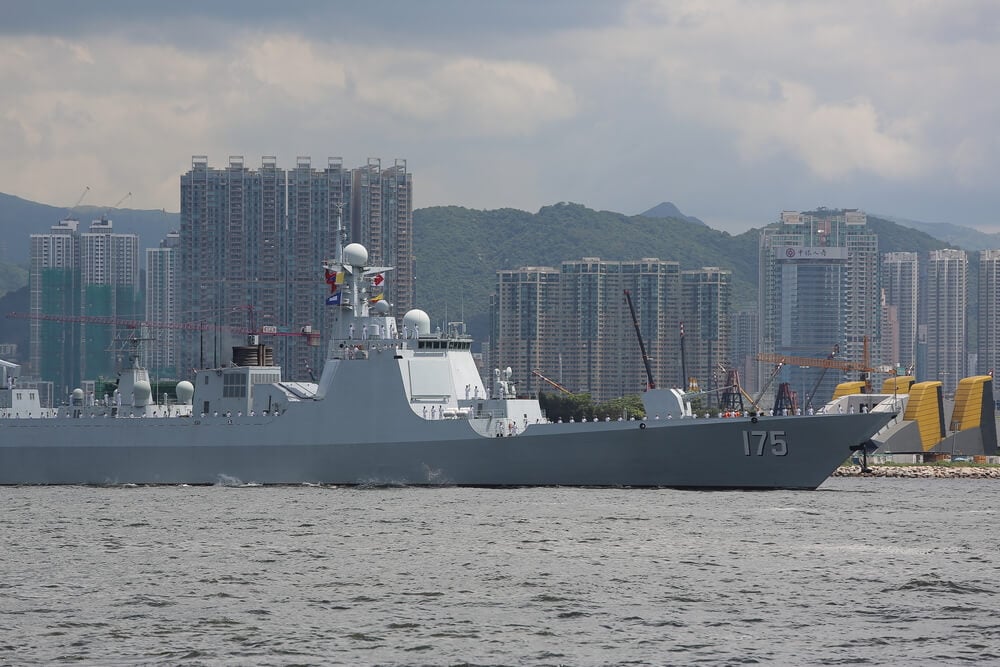China has been squeezing Taiwan for years. Chinese President Xi Jinping has made the island’s unification with the mainland a key pillar of his nationalist agenda and ordered the People’s Liberation Army (PLA) to be ready to seize the island by 2027.
But since Taiwan’s pro-independence president, William Lai, took office in January 2024, the vise has tightened, with air and naval incursions into Taiwan’s air-defense zone a daily occurrence.
Initially, Lai responded cautiously, seeing no reason to jeopardize Taiwan’s strong economy and his own high approval ratings. But his rhetoric against the mainland has become increasingly confrontational in recent months.
On March 13, Lai delivered a speech proposing 17 steps Taiwan should take to counter threats posed by China and its efforts to infiltrate the Taiwanese government and society.
And since June 22, Lai has delivered four of ten planned “national unity” speeches asserting Taiwan’s centuries-long cultural and political independence from China.
Urging Taiwanese citizens to unite against communism and to fight the threat of Chinese annexation, Lai is warning that China’s government is trying to erase Taiwanese national identity.
Why now?
Why now? Lai’s Democratic Progressive Party (DPP) controls the presidency but not the legislature, where it lost its majority to the Kuomintang (KMT) and the Taiwan People’s Party in January 2024.
The opposition has since slashed the budget and rammed through bills to clip the executive’s wings, while expanding the parliament’s powers.
Unable to pass laws, Lai’s DPP is backing a July 26 recall vote against dozens of KMT lawmakers in the hopes of flipping at least six seats and regaining a legislative majority.
Even if Lai’s rhetoric is for domestic consumption, Chinese leaders hear fighting words
Lai’s remarks are designed to whip up nationalist fervor and paint the KMT, which favors more conciliatory policies toward China, as a fifth column working against Taiwan’s interests.
But even if Lai’s rhetoric is for domestic consumption, Chinese leaders hear fighting words – and they are raising the temperature in the Taiwan Strait.
Refusing to let such provocations slide, they have rebuked Lai’s rhetoric as rising to the level of a self-destructive “Taiwan-independence manifesto.”
A full-scale invasion seems unlikely
Although Xi may wait until Lai has delivered all ten speeches before launching a response, military planners are surely drafting large-scale exercises modeled on the live-fire show that followed former US Speaker of the House Nancy Pelosi’s 2022 visit.
Expect missile tests over the island, flotillas encircling it, and coast guard “inspections” of Taiwanese civilian vessels that could disrupt commercial shipping if China decides to prolong the measures.
China might typically be tempted to go even further, but it will be deterred by the wild card that is US President Donald Trump.
Though Congress, the Pentagon, and much of Trump’s cabinet remain staunch China hawks, Chinese leaders see the president’s isolationist tendencies and personal disinterest in Taiwan as a sign that US backlash against “gray-zone” moves may be muted.
A full-scale invasion of the island seems unlikely in the near term. Xi still believes that time is on his side
But Trump is nothing if not unpredictable (as the world just witnessed in Iran), so Chinese strategists must consider whether punishing Lai too harshly could provoke a strong US response.
Thus, a full-scale invasion of the island seems unlikely in the near term. Xi still believes that time is on his side.
Why gamble everything now when the military balance keeps tilting more in China’s favor, and when Taiwan’s own politics might eventually deliver a more unification-friendly leadership?
An amphibious assault on Taiwan, possibly the most complex military operation in history, would risk catastrophic losses and global sanctions amid an ongoing economic slowdown.
The coercive squeeze already underway – a combination of economic, diplomatic, and gray-zone military pressure – is a far safer bet that still allows for plenty of incremental ratcheting.
Control is an illusion
For Lai, the political upside of talking tough currently outweighs the downside. Chinese saber-rattling may chip away at Taiwan’s sense of sovereignty, but it also rallies Taiwanese voters and Western allies in support of the DPP and the island’s defense.
What, then, should we watch for over the coming month? First, Lai still has more speeches planned, and the sixth one will touch directly on cross-strait relations. Each new riff will give China another pretext to flex its muscles.
 While neither side wants war, both find utility in controlled provocation - Chinese Navy
While neither side wants war, both find utility in controlled provocation - Chinese Navy
Second, the scale and scope of China’s military response – missile envelope, exclusion zones, coast-guard operations – will give everyone plenty to chew on.
Third, cues from the US – statements, an expanded naval presence in the South China Sea, congressional delegations visiting Taipei, fresh arms sales, new trade deals (with either side) – could either stiffen or soften Xi’s posture.
Finally, Taiwan will hold its recall vote on July 26. If the DPP flips six seats and regains control of the legislature, Lai will have fewer incentives to reach for the nationalist megaphone; if it falls short, he will keep the volume – and the danger level – elevated.
Either way, the situation is settling into a volatile, unstable equilibrium. While neither side wants war, both find utility in controlled provocation.
But control is an illusion. In the fog of mistrust, any miscalculation – or even plain bad luck – can create a runaway situation. Unless and until China and Taiwan find a way back to quieter politics, the 90-nautical-mile strait separating them will remain a live wire.
Ian Bremmer, Founder and President of Eurasia Group and GZERO Media, is a member of the Executive Committee of the UN High-level Advisory Body on Artificial Intelligence.